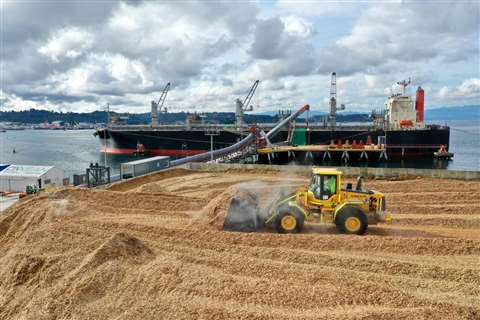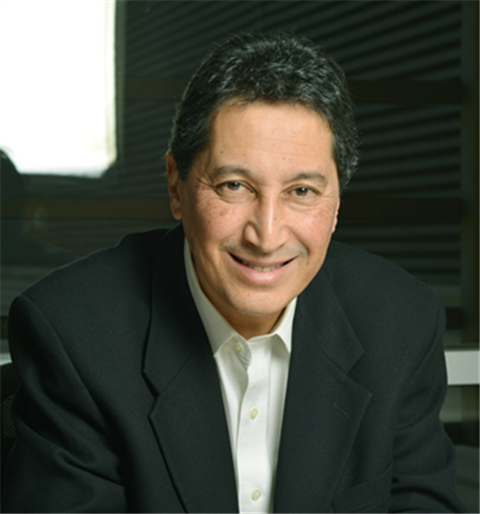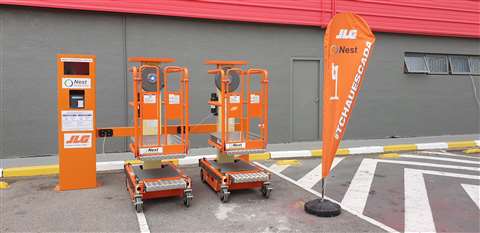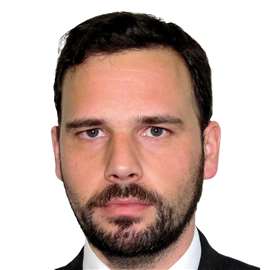Alquiler: traspasando costos
17 February 2022
 An SK Rental team operating at a port site.
An SK Rental team operating at a port site.
The pandemic continues to give significant blows to the global economy, but now under greater control that allows a glimpse of something normal. And while the waters calm down, new challenges are looming, such as supplying a demand that had been stagnant, but which in 2021 has seen a strong rebound thanks to the governments of many countries making an effort to develop infrastructure plans to boost their economies.
The year 2020 saw significant contractions in capital goods investments, with many companies trying to stop previous equipment purchase contracts for fear of overstocking in their sales or rental yards, but as the world is resuming its activities and the construction has, in general, good forecasts, the increase in the demand for construction equipment reveals the shortage of parts and machinery.
Pros and cons
Of course the increased demand is good news. But it is also necessary to analyze a series of factors that come together to generate a scenario marked by uncertainty since manufacturers, distributors and suppliers can be trapped if the recovery advances faster than they can 'catch up'.
One of the important factors is related to the supply chain. With all locks, closures, suspensions, etc. that the industry saw especially in 2020 and the lack of critical components (especially electronics) for equipment, has become a bottleneck that has been extremely difficult for manufacturers to overcome.
 Pablo Lam, CEO of SK Rental.
Pablo Lam, CEO of SK Rental.
To this must be added the increase in the value of other inputs, such as steel, which has more than doubled its value in the last year, becoming another factor that adds extra costs for the manufacture of equipment. While ocean freight values bottomed out in 2020, they later climbed to their highest levels since 2011. In the second quarter of 2021, a 40-foot high cube container was trading at $6,500, doubling the value recorded a year earlier.
And all of the above has an additional factor that impacts most (if not all) Latin American economies: the exchange rate. Without wanting to generalize, many of the economies in the region have seen how their local currencies have weakened against the US dollar, thus generating an even greater impact on the cost of purchasing equipment.
In a scenario like the one described, it is logical that contractors choose to rent equipment and thus reduce the size of their fleet and the complexity of their organizations in terms of asset disposal, logistics, maintenance and acquisition. “The volume of activity, measured as leased fleet, increased significantly compared to 2020, and was also higher than 2019. This is due to the reactivation of projects and also because we estimate that uncertainty has increased in the current contingency and that has increased the rental penetration in all the markets where we operate”, says Pablo Lam, CEO of SK Rental, one of the most important rental companies in Chile, which also has operations in Bolivia, Colombia and Peru. It should be remembered that during 2021 the group sold its operations in Brazil to Mills.
 SK launched its Be Market digital solution last year.
SK launched its Be Market digital solution last year.
An interesting fact that reinforces what the executive said in relation to rental penetration is that the effective occupancy of the SK Rental fleet in 2021 has been in the range of 75%, "this is between 5 and 10 percentage points per about 2019 and 2020”, he clarifies.
cheerful beads
If during 2020 rental companies reduced capital expenditures on construction equipment and general tools, now in recovery, experts predict that investment in equipment would have grown by over 30% last year, a growth that will be followed by a similar one in 2022.
In this context, it is understandable the announcement of Locar Guindastes e Transpotes Intermodais, a major Brazilian company, which is investing heavily in its expansion and renewal of fleets and recently placed an order for more than 500 units of Genie equipment.
Another Brazilian company that stood out in the news during 2021 was Mills, which, in addition to the acquisition of SK Rental do Brasil, completed the purchase of two other rental companies: Nest Rental and Altoplat, consolidating its leadership in platform rental. aerial work. In fact, according to Sérgio Kariya, CEO of the company, the company would have about a 29% market share in this area.
 Sergio Kariya, CEO of Mill.
Sergio Kariya, CEO of Mill.
Last year was a remarkable year for the company. “If we compare the impact of 2021 with 2019, we increased our EBITDA by approximately 85%. If we compare the result of Mills with the previous year (2020), the growth is around 67%”, details the executive. “The whole result is that contributed by the capture of synergies from the merger, gains in efficiency and productivity, as well as an improvement in our rental rates”, he explains.
The company's growth strategy has given results, thanks to the acquisitions and the expansion of its portfolio, Mills has faced the vicissitudes from a more robust position and more apart from the cyclical changes in the industry
Likewise, the company anticipated the facts and planned a strategy that gave positive results. “At the end of 2020, due to the pandemic, we saw possible logistical restrictions and a strong restriction in the supply chain, which caused us to increase our spare parts inventory by 150% to maintain the level of service to our customers, in addition to focus on reducing our equipment unavailability. This action turned out to be correct because the impact of supply chain restrictions was very strong all over the world,” says Kariya.
This, coupled with improving demand for air access equipment, brought an improvement in the company's equipment utilization from 57% to nearly 68% by the end of 2021.
rising rent
 One of Mills' acquisitions last year was Nest Rental.
One of Mills' acquisitions last year was Nest Rental.
Rental companies rarely publish their values online and these can only be obtained through direct quotes, but in general terms it can be ventured that the monthly rates should be around 5-7% of the value of the equipment in terms of earth movement, and closer to 10% in light equipment. "Companies, in general, seek a return on investment of 45% per year in yellow line equipment and 70% in light equipment," says an industry player.
These percentages alone, and taking into account the complexities of the demand, have already caused rental rates to increase across the board. “Rental rates have registered an increase as a result of the higher cost of equipment and spare parts for the reasons indicated. I think that lessors are making an effort to try not to pass on all this higher cost to customers, seeking greater efficiency. I estimate an average rate increase in the market of close to 10% in 2021,” says Lam.
This percentage is what Mills would have experienced. According to Kariya, although the nominal value of the equipment has grown much more strongly, thanks to the strategy used by the company, the effect on rental rates was 10%. "Our competitors are also following us in recovering prices, which creates a healthy environment to seek better returns on investment," he says.
Forecasts
Only during the second half of 2022 could the scenario begin to improve for equipment manufacturers by decompressing a bit the bottlenecks that are experienced today. “Currently there is no inventory, if you buy a piece of equipment today it will not arrive before August/September, but the times should start to improve as the year goes on”, says an industry expert related to one of the main manufacturers, who anticipates that the value of the equipment could see a rise of 10% between now and the end of the year.
With this, 2022 should also see an increase in rental rates. How much could be reasonable? "Between 12-15% is a healthy increase," he says.
For Lam, the increase in rental value will depend on how the indicated variables are given in the different countries. "However, as I indicated earlier, lessors are making great efforts in terms of efficiency to avoid passing on all the higher costs to customers, and in this sense, the digital transformation of our companies allows us to be faster and more efficient."
In Brazil, Mills is also optimistic for 2022. “Despite being a challenging year for Brazil's GDP, more inflation to come and a presidential election year, we expect the increase in infrastructure projects combined with imbalance between supply and the demand generates positive impacts in better rental rates”, concludes Kariya.
CONTÁCTESE CON EL EQUIPO





